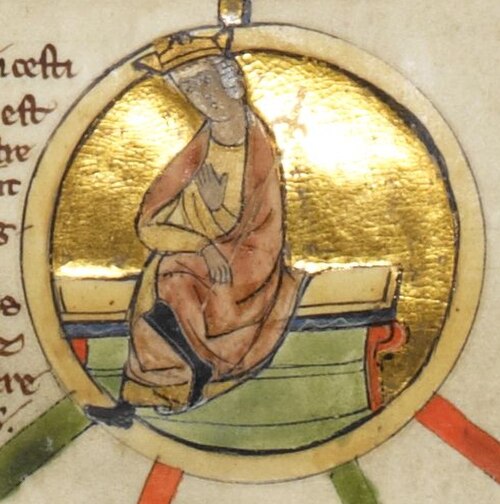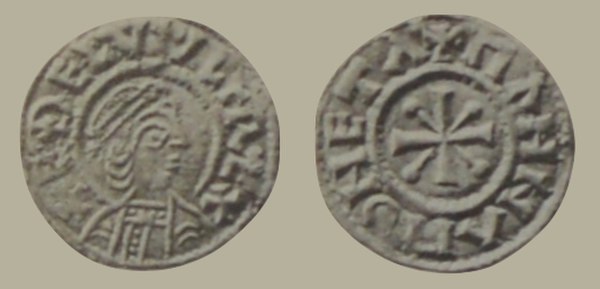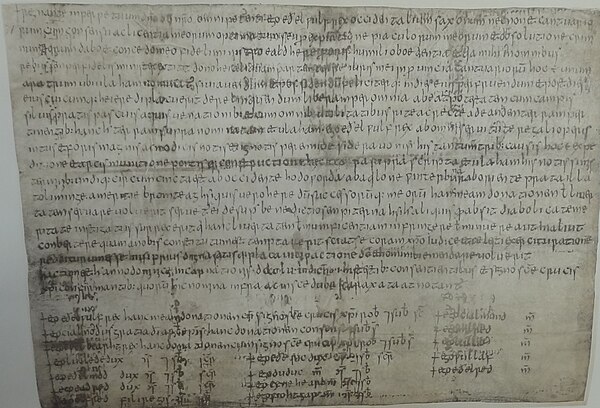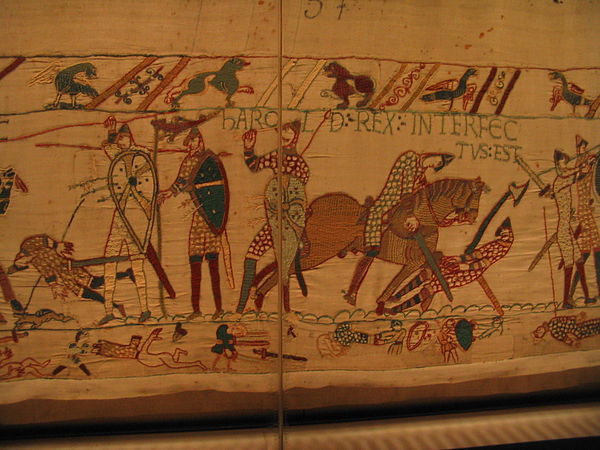Æthelwulf, King of Wessex
Videos
Page
Æthelwulf was King of Wessex from 839 to 858. In 825, his father, King Ecgberht, defeated King Beornwulf of Mercia, ending a long Mercian dominance over Anglo-Saxon England south of the Humber. Ecgberht sent Æthelwulf with an army to Kent, where he expelled the Mercian sub-king and was himself appointed sub-king. After 830, Ecgberht maintained good relations with Mercia, and this was continued by Æthelwulf when he became king in 839, the first son to succeed his father as West Saxon king since 641.

Æthelwulf in the early fourteenth-century Genealogical Roll of the Kings of England

Depiction of Æthelwulf in the late-13th-century Genealogical Chronicle of the English Kings

Coin of King Æthelwulf: "EĐELVVLF REX", moneyer Manna, Canterbury

Charter S 316 dated 855, in which Æthelwulf granted land at Ulaham in Kent to his minister Ealdhere.
Wessex
Videos
Page
The Kingdom of the West Saxons, also known as the Kingdom of Wessex, was an Anglo-Saxon kingdom in the south of Great Britain, from around 519 until England was unified in 927.

Imaginary depiction of Cerdic from John Speed's 1611 "Saxon Heptarchy"

Anglo-Saxon–Viking coin weight, used for trading bullion and hacksilver. The material is lead and it weighs 36 g (1.3 oz). Embedded with an Anglo-Saxon sceat (Series K type 32a) dating to 720–750 and minted in Kent. It is edged in a dotted triangle pattern. Its origin is the Danelaw region and dates to 870–930

Unification of England and Defeat of the Danelaw in the 10th century under Wessex.

The Bayeux Tapestry, depicting the death of Harold II, 14 October 1066. His "Wyvern Standard" can be clearly seen at the left side.